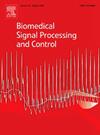FMLAN:跨主体、跨会话脑电图情绪识别新框架
IF 4.9
2区 医学
Q1 ENGINEERING, BIOMEDICAL
引用次数: 0
摘要
情绪识别在脑机接口(BCI)应用中意义重大。脑电图(EEG)具有精确的时间分辨率和可靠性,因此被广泛用于情绪识别。然而,不同受试者和不同阶段的脑电信号是不同的,这限制了情绪识别方法对新用户的有效性。为了解决这个问题,多源域适应被引入到脑电图情绪识别中。实际上,对于跨主体和跨会话的情感识别方法来说,有两个最重要的方面:一是提取与情感识别任务相关的特征,二是将已标注主体或会话(源域)的特征与未标注主体或会话(目标域)的特征对齐。在本研究中,我们提出了细粒度互学自适应网络(FMLAN),以在这两个方面做出创新性改进。具体来说,我们建立了多个独立的域适应子网络,每个子网络对应一个特定的源域。此外,我们还引入了一个联合域自适应子网络,将多个源域结合在一起。在脑电图情感识别方面,我们首次引入了相互学习,将独立域适应网络和联合域适应子网络连接起来。这促进了不同领域之间互补信息的传递,使每个子网络都能提取出更全面、更稳健的特征。此外,我们还设计了新颖的细粒度配准模块(FAM),该模块在特征配准过程中考虑了类别和决策边界信息,确保配准更加准确。在 SEED 和 SEED-IV 数据集上进行的大量实验表明,我们的方法在性能上优于最先进的方法。本文章由计算机程序翻译,如有差异,请以英文原文为准。
FMLAN: A novel framework for cross-subject and cross-session EEG emotion recognition
Emotion recognition is significant in brain-computer interface (BCI) applications. Electroencephalography (EEG) is extensively employed for emotion recognition because of its precise temporal resolution and dependability. However, EEG signals are variable across subjects and sessions, limiting the effectiveness of emotion recognition methods on new users. To address this problem, multi-source domain adaptation was introduced to EEG emotion recognition. Actually, for cross-subject and cross-session emotion recognition methods, there are two most important aspects: extracting features relevant to the emotion recognition task and aligning the features of labeled subjects or sessions(source domains) with those of the unlabeled subject or session(target domain). In this study, we propose a Fine-grained Mutual Learning Adaptation Network (FMLAN) to make innovative improvements in these two aspects. Specifically, we establish multiple separate domain adaptation sub-networks, each corresponding to a specific source domain. Additionally, we introduce a single joint domain adaptation sub-network that combines multiple source domains together. For EEG emotion recognition, we introduce mutual learning for the first time to connect separate domain adaptation networks and joint domain adaptation sub-network. This facilitates the transfer of complementary information between different domains, enabling each sub-network to extract more comprehensive and robust features. Additionally, we design a novel Fine-grained Alignment Module (FAM), which takes category and decision boundary information into account during the feature alignment, ensuring more accurate alignment. Extensive experiments on SEED and SEED-IV datasets demonstrate that our approach outperforms state-of-the-art methods in performance.
求助全文
通过发布文献求助,成功后即可免费获取论文全文。
去求助
来源期刊

Biomedical Signal Processing and Control
工程技术-工程:生物医学
CiteScore
9.80
自引率
13.70%
发文量
822
审稿时长
4 months
期刊介绍:
Biomedical Signal Processing and Control aims to provide a cross-disciplinary international forum for the interchange of information on research in the measurement and analysis of signals and images in clinical medicine and the biological sciences. Emphasis is placed on contributions dealing with the practical, applications-led research on the use of methods and devices in clinical diagnosis, patient monitoring and management.
Biomedical Signal Processing and Control reflects the main areas in which these methods are being used and developed at the interface of both engineering and clinical science. The scope of the journal is defined to include relevant review papers, technical notes, short communications and letters. Tutorial papers and special issues will also be published.
 求助内容:
求助内容: 应助结果提醒方式:
应助结果提醒方式:


